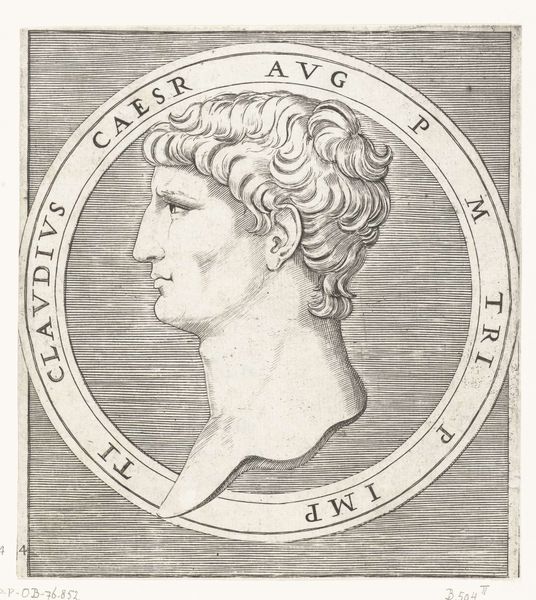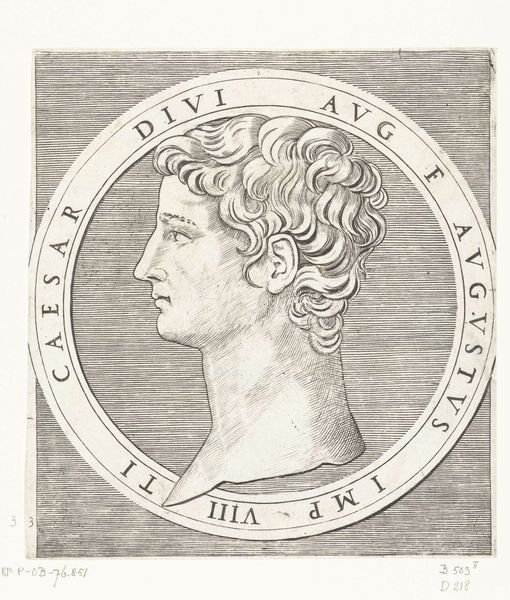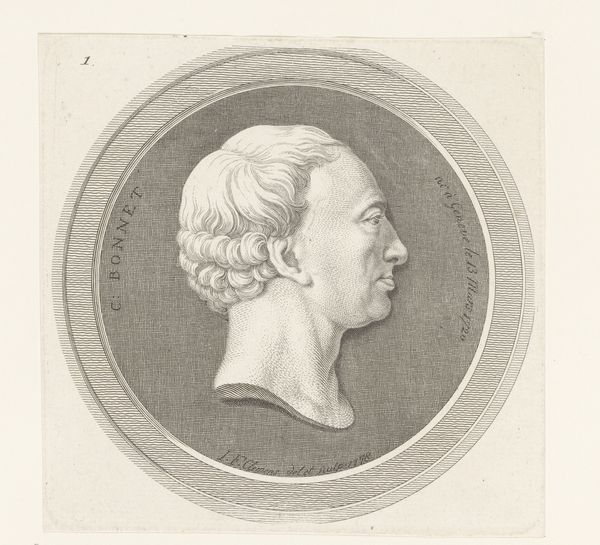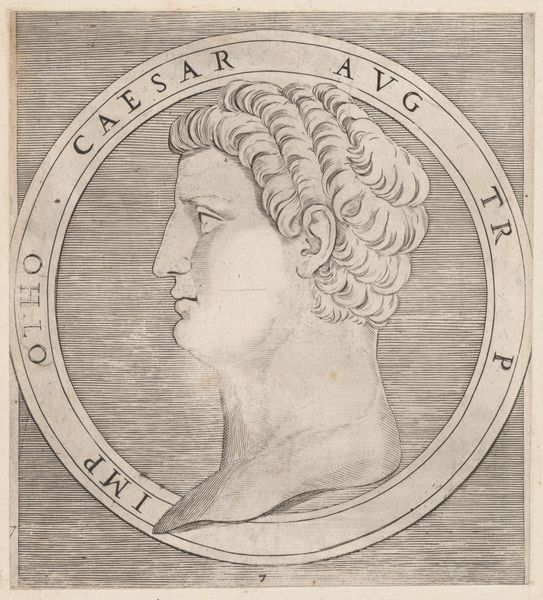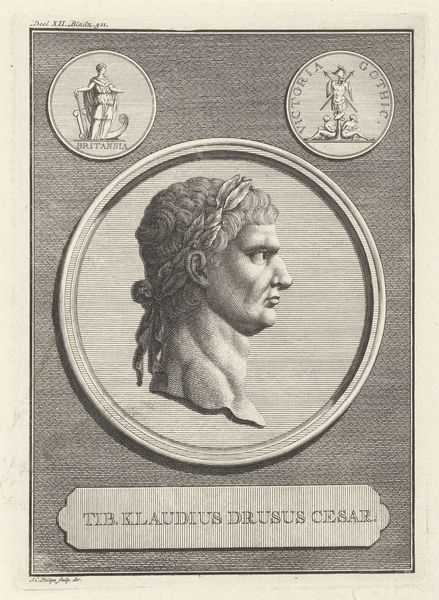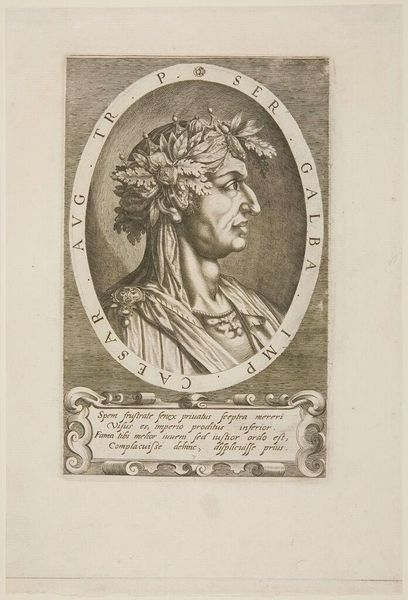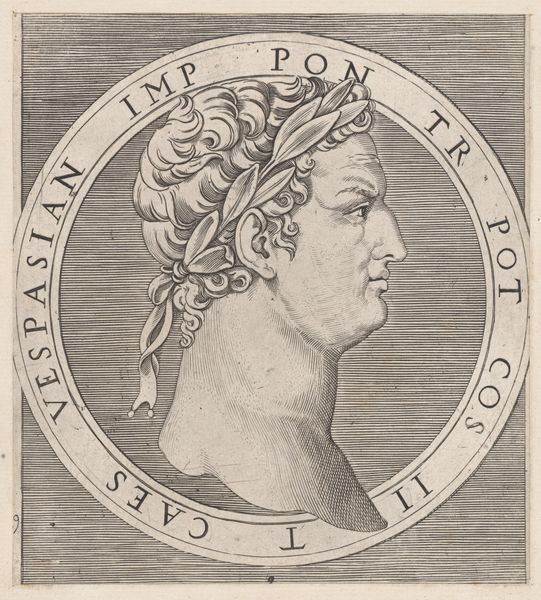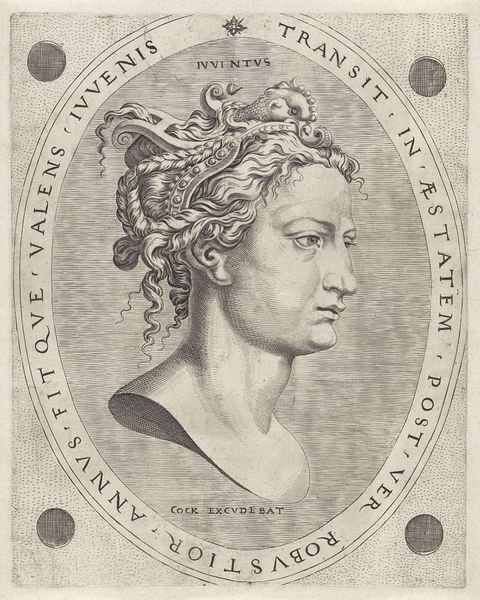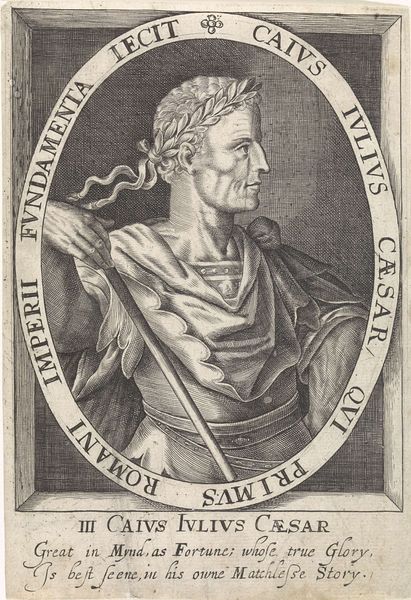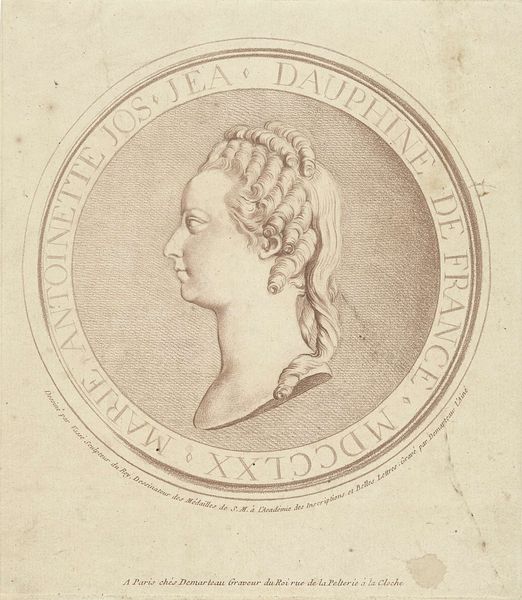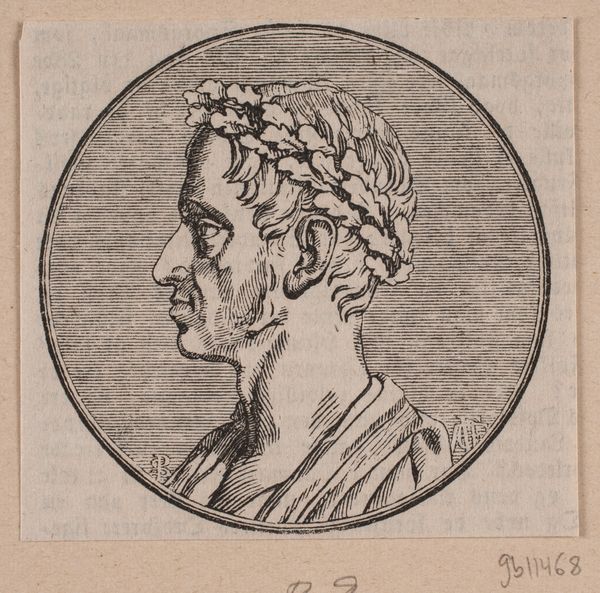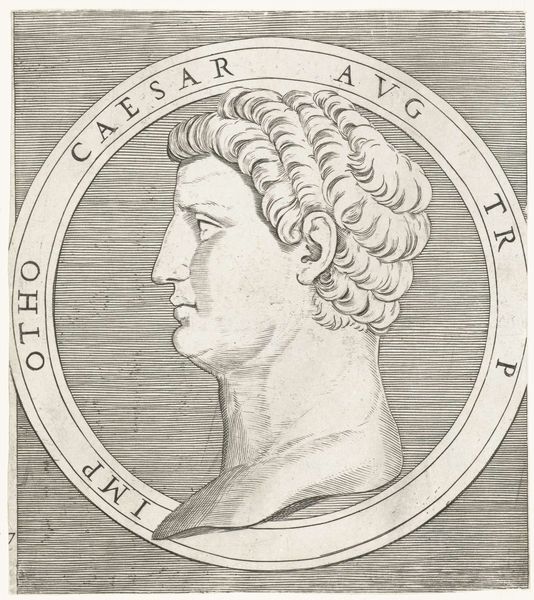
print, engraving
#
portrait
# print
#
old engraving style
#
caricature
#
classical-realism
#
ancient-mediterranean
#
portrait drawing
#
history-painting
#
italian-renaissance
#
engraving
Dimensions: height 165 mm, width 156 mm
Copyright: Rijks Museum: Open Domain
Curator: We're standing before Marcantonio Raimondi's "Portret van keizer Augustus in ronde omlijsting," an engraving made sometime between 1510 and 1527. Editor: My first impression is one of starkness, really. The sharp lines of the engraving give the subject a feeling of cold authority, and the contrast emphasizes the purity of line above all else. Curator: Absolutely. This portrait reflects a keen interest during the Italian Renaissance in classical antiquity and power. We can explore how Augustus, the first Roman Emperor, becomes a symbol appropriated within the complex power dynamics of the 16th century. Who is attempting to mirror or invoke this authority? Editor: Indeed. The clean, uncluttered style steers clear of excessive ornamentation, emphasizing a more conceptual representation. Think of how structuralism isolates components, examining how meaning is constructed. This image invites such a process. Look at the interplay of the circular frame and the gridwork surrounding the subject, and what is being inferred through these very specific, carefully organized choices. Curator: And we must acknowledge that even portrayals of Augustus weren't free from political bias. Later interpretations often served contemporary rulers' ambitions. Was Raimondi perhaps influenced by the tumultuous papal politics of the time, attempting to project or critique an idea of centralized control? Who benefits from such idealization of power? Editor: That reading adds another layer, certainly. Considering its formal choices, the stark clarity evokes an idealized image. Raimondi employs linear precision that directs our eyes, creating an almost tangible sense of form and structure. A clear statement through visual rhetoric. Curator: Understanding that such powerful imagery has been repeatedly redeployed throughout history becomes especially important in our contemporary discourse. Consider how "Roman" ideals have been twisted to rationalize many ideologies that we find abhorrent today. Editor: Precisely. Looking purely at form and technique offers insight, while recognizing context roots the engraving in historical and theoretical debates. The enduring interplay is what makes viewing and reviewing works such as this endlessly stimulating. Curator: Indeed, reflecting on Raimondi's piece urges us to deconstruct visual rhetoric, interrogating our perception and our history to fully comprehend how visual tools inform society.
Comments
No comments
Be the first to comment and join the conversation on the ultimate creative platform.
